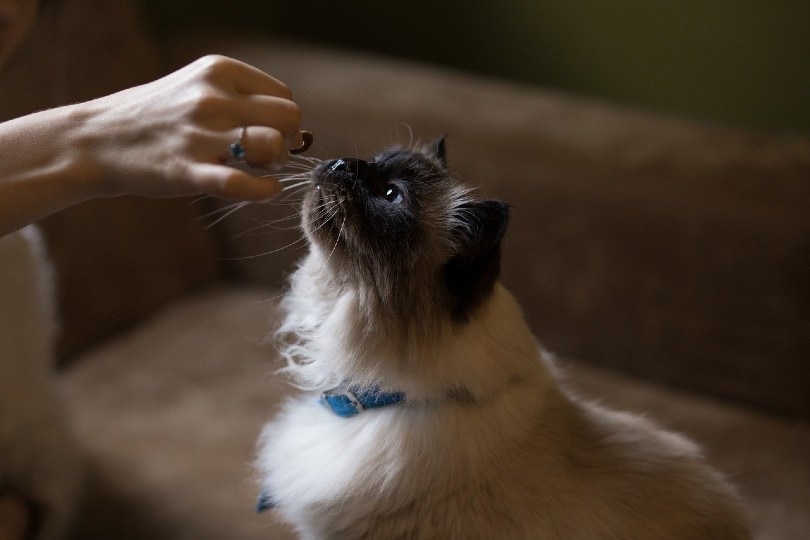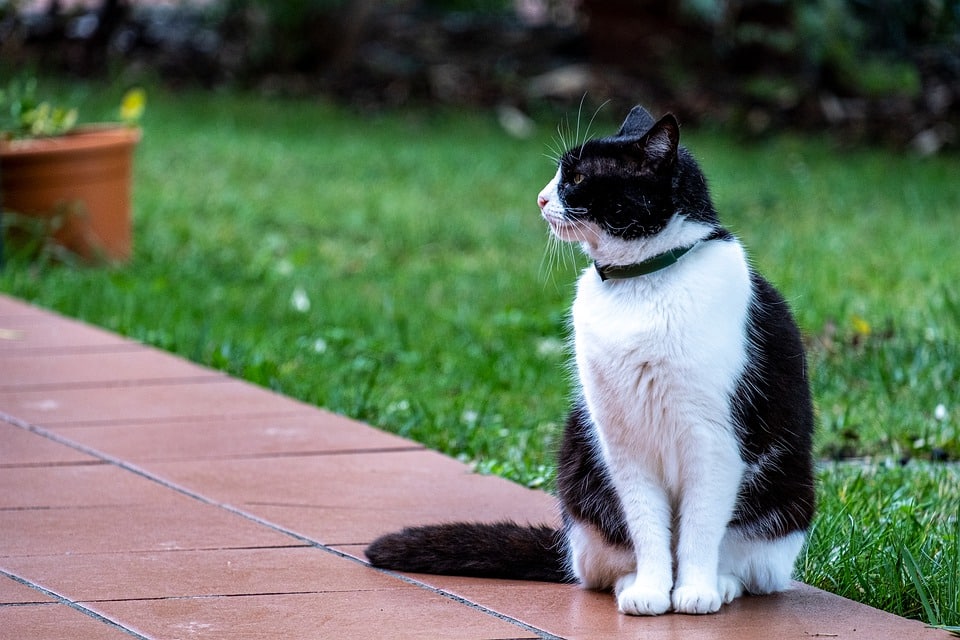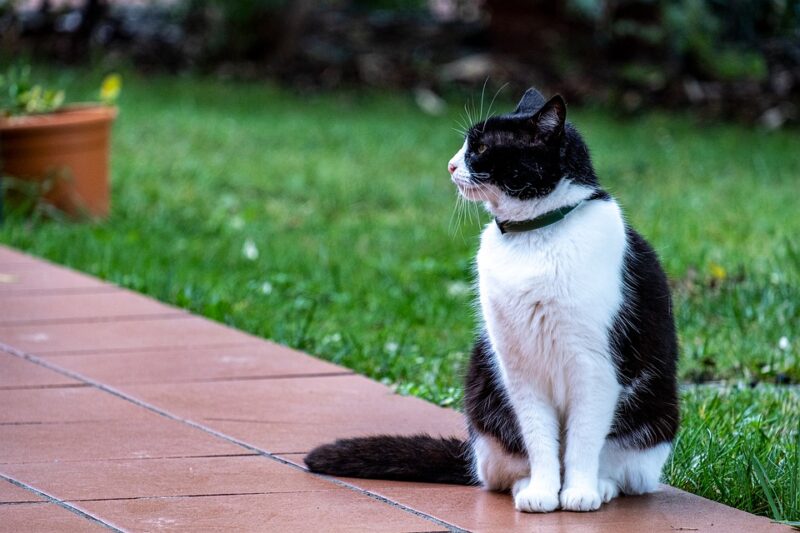Several products are available to train pets, but the shock collar is one of the most controversial. It’s a device more commonly associated with training dogs and is used to train an animal to stop a specific behavior. Some swear by them, while others claim it’s a form of animal cruelty. You may wonder if cat shock collars are safe. Some owners use them, but no, they most likely are not safe for cat use. Let’s find out why.
Do Shock Collars Work For Cats?
Maybe your cat is getting on your nerves with annoying behavior like incessant meowing, scratching up your furniture, or running away. You’d like to know if they make shock collars for cats. Some companies have developed shock collars for cats. Some pet parents who want to get their cats in line with shocking use collars made for small dogs on their cats.

However, just because something is out on the market doesn’t necessarily mean it’s safe or even legal! Electric shock collars have been banned in Scotland, Germany, Austria, Switzerland, and some parts of Australia. While they are not illegal in America, some stores like Petco have stopped selling shock collars altogether.
This could be warning enough to steer clear of this method of training your cat. However, there are always two sides to an argument. Read on as we look at the facts regarding whether cat shock collars are safe for cats.
Cat Shock Collars
A shock collar is worn around an animal’s neck and delivers an electric shock to the pet. This shock is delivered in two ways: through a manned device or when an invisible barrier is crossed.
Remote Control Shock
This shock collar comes with a remote. When the pet owner decides the pet is not behaving how they should, they push a button on a remote to give a vibration, sound, or shock. The remote-controlled versions will usually give the warnings in that order so the pet learns to stop the behavior before the shock comes.
Automatic Shock
There are two types of automatic shock collars: ones that go off when an invisible barrier is crossed and those that go off when a decibel limit is reached.
The invisible barrier collar is used to keep a pet within a certain area or out of a certain area. Invisible fences in yards keep pets from running away, and motion-detection shockers can also keep pets out of a certain room you don’t want them to enter.
The other type of automatic shock collar delivers the animal a shock when they make a loud noise like a bark or yowl.
How Do Cat Shock Collars Work?
Shock collars are used as a form of “positive punishment,” as some behaviorists call it. The collar has two prongs on the inside that touch your cat’s skin. Depending on the type of shock collar, a shock is activated through an electronic feature on the collar.
Some shock collars are specifically designed for cats. Most of the time, people put collars made for small dogs on their cats.
Are Shock Collars Safe for Cats?
The evidence is pretty strong that shock collars are not safe for cats. Most collars deliver a shock between 100 to 6,000 volts, and 300 volts of current feels like an intense burn to a human, imagine what it feels like to your small cat.
Not only is it cruel to send pain to your cat through an electric shock, but the shock administered from a shock collar can also be fatal for cats. Even a less intense current can mess up a cat’s cardiovascular or nervous system, regardless of the cat’s age.
Shocks can also prevent a cat from defending himself in emergencies. Perhaps he needs to get your attention with loud noises or get away from a predator, but a shock collar inflicts pain on him instead.
Additionally, manufacturers are typically not transparent about how much shock their collars deliver or the intensity of their vibrations or beeps. So, you are at the will of the device regarding the intensity at which you are punishing your cat. You could be sending a stronger shock than you intend to.

Should You Use a Shock Collar On a Cat?
Most vets and cat behaviorists agree that cat shock collars can be dangerous and ineffective in training a cat. We discussed why they are unsafe, but let’s talk about how they don’t work for cat behavior training.
Positive Punishment is Ineffective for Cats
A shock collar is a form of “positive punishment” that cats do not react well to. The cat’s brain does not respond as well to punishment to change their behavior. They don’t understand that pain means “no,” rather, they understand when a reward means “yes.” So, a more effective way to train your cat is to give him praise and treats for good behavior.
Corrective Punishment Could Make Bad Behavior Worse
Cats are known to be vengeful creatures. If you inflict physical or emotional pain, they will commonly lash out in other ways. Cats have been known to attack people or destroy things like furniture when they’ve gotten a negative message from their owners.
Not Many on The Market
Lastly, shock collars made for cats can be difficult to find. If you want one, you will probably need to do extensive research on small dog shock collars to decide if they give a small enough shock not to harm your cat.
More Humane Alternatives to Consider
While shock collars for cats can be unsafe, ineffective, and difficult to find, other options exist for training your cat. Remember that punishing your cat for bad behavior typically doesn’t work for most cats.
Training collars
If you fully understand the implications of using vibration and sound to train a cat, it could provide a more humane way to train your cat. Some collars are specifically made for small dogs or cats.
Instead of a shock, the collars work by vibrating or making a loud sound to discourage behavior. You can choose which one you want your cat to experience.
Cat Sprays
Another more humane way to “positively punish” your cat into good behavior is by scaring them with a motion-detection spray. The spray activates when your cat enters a forbidden space or goes near a forbidden object. It harmlessly sprays compressed air to scare your cat away.
A more effective method is to try cat pheromone spray. These sprays contain ingredients that calm cats down, which could lull your cat into a relaxed state.
Positive Reinforcement
The best way to try to change a cat’s behavior is by praising wanted behavior. While cats are egged on by punishment, as we learned earlier, they usually are very responsive to rewards.
Employ this tactic by giving your feline a treat or a pet in their favorite spot when they display good behavior. This will encourage your cat to keep repeating the good act until it becomes a habit.
Preventative Measures
Cats display unusual behavior that we find irritating, but it’s usually related to their instincts. Incessant yowling coming from an unspayed female cat is simply a part of the female cat cycle. Cats jump on your counter because of their instinct to feel safer by climbing high up. They scratch things to mark their territory and file their nails.
It’s possible to redirect these behaviors (or stop certain ones by either spaying or neutering your cat), but you cannot prevent them from acting on their instincts. For cats who like to jump, get them a cat tree. For scratching cats, place scratching posts where they like to scratch. That way, your cat can be free to be a cat, and you can have your sanity back!
Conclusion
Cat shock collars are increasingly difficult to find due to legislation in some countries banning them, animal rights activists declaring their cruelty, and large pet chains discontinuing the products. We’ve learned why: the shock delivered to a cat could be harmful to their health and cause them to act out in other ways. Shock collars for cats are unsafe and ineffective, so it’s best to try one of our other methods to change your cat’s behavior.
Featured Image Credit: Pixabay
Contents
- Do Shock Collars Work For Cats?
- Cat Shock Collars
- How Do Cat Shock Collars Work?
- Are Shock Collars Safe for Cats?
- Should You Use a Shock Collar On a Cat?
- Positive Punishment is Ineffective for Cats
- Corrective Punishment Could Make Bad Behavior Worse
- Not Many on The Market
- More Humane Alternatives to Consider
- Conclusion














